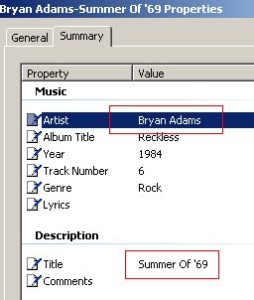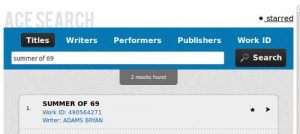Music and songs are legally available in two major aspects:
a. Copyrighted
b. Public domain
(For readers looking for details on the following topics below, you can go directly to the related section):
License a song for film or video
Permission to record song
Licensing Music for your website
Music Licensing Matrix
License music – a demo page for asking permission to use music by applying for a music license online.
Naturally, if you use music or songs that belong to the public domain, then you will not need to get permission(read: When does music fall into the public domain?). However, things are very different if the music is copyrighted. Always remember that to ask permission to use copyrighted music is the same as asking for a music license to use them.
This is where a lot of confusion can take place. Bear in mind that the process would depend on the music copyright owner. Some copyright owners are not strict with their requirements in terms of asking permission. Typically, in most processes, you will be required to apply for a music license and pay some fee. While in some situations, it does not require you to apply for license or pay at all. This post would cover all these aspects in detail, so that you will know what to do regardless of any differences between the processes.
Step1.) Find the music publisher of the copyrighted music
You need to know the music publisher of the song. Music publisher administers copyrighted music. This is where you need to obtain permission to use music. In most cases, this is not available so you need to do some research. You can start with the artist or the songwriter of the song. You will know the artist or songwriter by examining the ID3 tags’ information of the MP3 file (or CD in-lay for CD album).
The ID3 tags information can be found by right-clicking the mp3 file then go to “Properties” – “Summary”. Other mp3 players such as an iPod provide this information much easily.
Once you know the artist, album and other information pertaining to the song; you can then perform a song copyright search to find out the music publisher of the song.
Another clue to find out where you have downloaded or obtained the song; if it is coming from a website, try to check what are the terms and conditions attached. Does it include information about the publisher? A good way is to contact the website owner representing the songs. Most of the time, website owner is not the music publisher but they know whom to contact if you are interested in using the songs.
Step2.)Describe how you will use the music to the publisher
To speed up the process ; you should be providing detailed information to the music publisher.
Once you have the contact information of the music publisher, provide them with the following information (they will be using the obtained information in issuing a license):
1.) Title and details of the project –if it’s a movie project, describe how the music would be used in your movie. Even though a lot of licensees often miss the details; some music publishers need to know what your project is all about. There are some sensitive topics that music publishers do not want their work to be included.
2.) Enumerate what music rights are you planning to use and why? – This is slightly complicated. A lot of licensee does not know these rights; below are some of the most common:
a.) Synchronization rights – if you want to use the song in your film, video or TV project. This would synchronize the song with the picture of the video/film/TV project. Even a slideshow with pictures exploit sync rights if you are planning to add copyrighted music to it.
Take note that there are different music rights for film that you need to know and needs to be cleared.
b.) Mechanical rights – if you want to use the song and have it included, sold/distributed in mechanical units such as CD, DVD, Blue ray, etc. If the music publisher is represented by the mechanical licensing agent such as Harry Fox agency.
Then you need to ask permission from them and not to the music publisher. Read this post to know more about what is a mechanical license agreement.
c.) Performance rights – some music publishers are also represented by performing right societies. These are ASCAP/BMI in the US or Filscap in the Philippines. You know this in your copyright search in the previous steps. For example, the song “Summer of 69” by Bryan Adams is published by Almo Music Corporation
And this is an ASCAP publisher as shown below:
If they are represented, you need to ask permission to the society and not to the music publisher.
Performance right is a right to publicly perform the copyrighted music. This includes having them publicly shown on-air on TV (such as included in featured shows); or played on radio. This also includes performing the song on the public such as in the live venue/concert.
You can read this post to get more information about public performance music license.
d.) Master recording rights – the music publisher does not always own these rights. Some independent music publishers do. The owner of this is mostly the recording label of the artist. If the artist is self-produced or even self-published; then the artist itself is both the publisher and also own the sound recording/master recording.
As a background, this is the right to use the sound recording in your projects. One of the most commonly exploited music rights.
Case Example (more examples in the succeeding section): For a video producer wanting to use copyrighted music in his commercial video projects, the following rights are needed to be cleared:
a.) Sync rights- using the music along with the video content.
b.) Mechanical rights – putting the music in a video content and distributed as DVD, etc for sale.
c.) Master recording rights – using the master sound recording of the music.
Take note that the producer does not need to be cleared with performing rights because the producer won’t be showing the content publicly.


